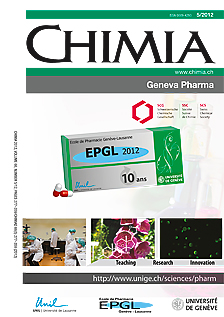Dosage Optimization of Treatments Using Population Pharmacokinetic Modeling and Simulation
DOI:
https://doi.org/10.2533/chimia.2012.291Keywords:
Hiv, Nevirapine, Nonmem, Pharmacokinetics, PopulationAbstract
Pharmacokinetic variability in drug levels represent for some drugs a major determinant of treatment success, since sub-therapeutic concentrations might lead to toxic reactions, treatment discontinuation or inefficacy. This is true for most antiretroviral drugs, which exhibit high inter-patient variability in their pharmacokinetics that has been partially explained by some genetic and non-genetic factors. The population pharmacokinetic approach represents a very useful tool for the description of the dose-concentration relationship, the quantification of variability in the target population of patients and the identification of influencing factors. It can thus be used to make predictions and dosage adjustment optimization based on Bayesian therapeutic drug monitoring (TDM). This approach has been used to characterize the pharmacokinetics of nevirapine (NVP) in 137 HIV-positive patients followed within the frame of a TDM program. Among tested covariates, body weight, co-administration of a cytochrome (CYP) 3A4 inducer or boosted atazanavir as well as elevated aspartate transaminases showed an effect on NVP elimination. In addition, genetic polymorphism in the CYP2B6 was associated with reduced NVP clearance. Altogether, these factors could explain 26% in NVP variability. Model-based simulations were used to compare the adequacy of different dosage regimens in relation to the therapeutic target associated with treatment efficacy. In conclusion, the population approach is very useful to characterize the pharmacokinetic profile of drugs in a population of interest. The quantification and the identification of the sources of variability is a rational approach to making optimal dosage decision for certain drugs administered chronically.Downloads
Published
2012-05-30
Issue
Section
Scientific Articles
License
Copyright (c) 2012 Swiss Chemical Society

This work is licensed under a Creative Commons Attribution-NonCommercial 4.0 International License.
How to Cite
[1]
M. Guidi, M. Arab-Alameddine, M. Rotger, M. Aouri, A. Telenti, L. A. Decosterd, T. Buclin, C. Csajka, Chimia 2012, 66, 291, DOI: 10.2533/chimia.2012.291.







